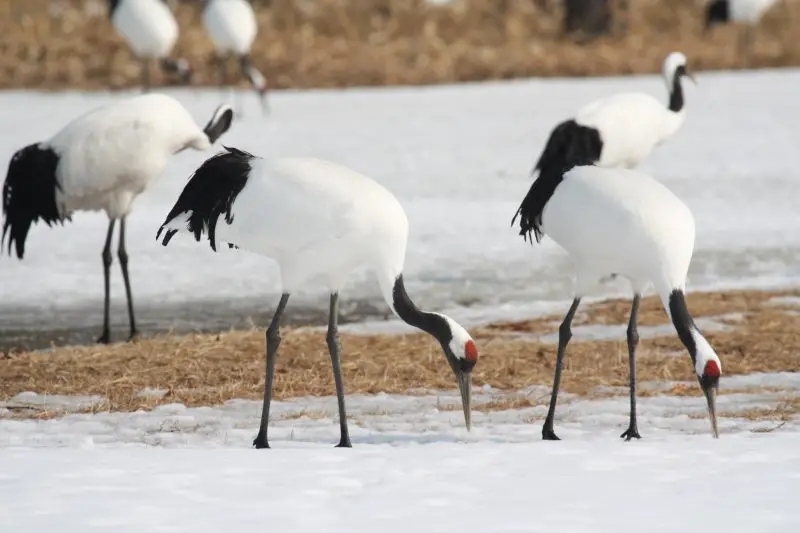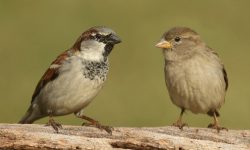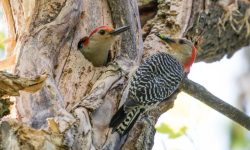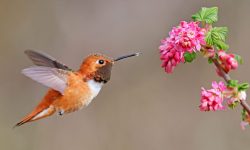Cranes are elegant, long-legged birds that captivate birdwatchers and ecologists alike. Found across wetlands, grasslands, and agricultural fields, these birds are more than just graceful fliers—they are opportunistic omnivores whose diet shifts dramatically with the seasons. Understanding what cranes eat and how their dietary patterns change throughout the year is key to protecting their habitats and ensuring their survival.

Why Cranes Change Their Diets Seasonally
Cranes are among the most ecologically versatile birds, able to modify their feeding strategies based on both internal biological needs and external environmental conditions. As highly mobile, migratory species, they encounter a wide range of habitats across their annual cycles—wetlands, grasslands, floodplains, agricultural fields—and each habitat offers a different menu depending on the season. Their seasonal diet shifts are not random but are tightly regulated by physiology, ecosystem productivity, and survival priorities.
In spring, as cranes return to their breeding grounds after long migratory journeys, wetlands begin to thaw and teem with life. This season marks the onset of reproductive activity, and cranes seek out high-protein foods such as insects, amphibians, and small vertebrates to rebuild muscle mass, fuel courtship behaviors, and support egg production.
During summer, the abundance of insect prey continues, but their diet broadens to include fruits, seeds, and early crops. For parents raising chicks, food must be nutrient-dense and easily digestible, enabling rapid juvenile growth. The demand for food variety peaks during this season, as both adults and fledglings need sustained energy.
As autumn approaches, the cranes’ biological focus shifts from growth to migration. Energy efficiency becomes paramount, and their foraging behavior changes accordingly. Birds begin consuming large quantities of carbohydrate-rich grains—corn, rice, wheat—left behind in harvested fields. These foods help them accumulate fat reserves essential for long-distance flight and endurance.
In winter, cranes that remain in temperate zones or migrate to milder climates must cope with reduced daylight, lower temperatures, and limited natural food. Their survival depends on high-calorie, readily accessible resources, such as crop remnants, underground plant parts like tubers and rhizomes, and aquatic invertebrates in unfrozen wetlands.
The seasonal availability of food is further shaped by climate, water levels, vegetation cycles, and human land use. Moreover, life history events—such as molting, nesting, and migratory departure—trigger metabolic changes that influence dietary needs. Cranes demonstrate a finely tuned ability to align their foraging strategies with these seasonal pulses, making them an extraordinary model of avian adaptability.
Let’s now explore what cranes eat in each season—and why those choices matter.
Spring: Protein for Recovery and Nesting
Foraging in Wetlands
As winter loosens its grip and daylight stretches longer, cranes return to their breeding territories—often vast wetlands, floodplains, or grasslands that have lain dormant for months. Spring marks a vital period in their annual cycle: the need to replenish energy reserves depleted by migration, establish territory, and prepare for reproduction. With melting snow and rising temperatures, wetlands reawaken in a burst of biological activity. Shallow waters teem with amphibians, while damp soils ripple with earthworms and emerging insects, transforming these ecosystems into seasonal buffets.
Cranes begin foraging intensively the moment they arrive. Their long, sensitive bills probe the soft, thawed earth in search of earthworms, beetle larvae, and other nutrient-rich invertebrates. Grasshoppers, crickets, and aquatic insects such as dragonfly nymphs or water beetles offer easy-to-digest protein essential for muscle recovery and metabolic repair after their migratory journey.
Amphibians such as frogs, toads, and tadpoles become prime targets, especially in areas where shallow pools form temporary breeding grounds. Some cranes, including the Whooping Crane (Grus americana), are also known to opportunistically snatch up small fish or aquatic reptiles if available. These prey items provide not only protein but also important micronutrients such as calcium and phosphorus, which are vital during egg production.
In addition to animal-based foods, cranes may nibble on the earliest shoots of wetland plants—new grasses, sedges, or aquatic vegetation emerging from winter dormancy. These fresh greens offer hydration and fiber, complementing their animal protein intake.
For cranes, spring is a race against time. As pair bonds are reaffirmed and nesting sites chosen, females must rapidly produce eggs, and males must defend territory. Chicks hatch precocial—able to walk and feed within hours—but they are still highly vulnerable, requiring a steady supply of nutrient-dense food. The success of the entire breeding season hinges on the adult’s ability to secure rich, reliable food sources during this narrow seasonal window.
In species such as the Sandhill Crane (Antigone canadensis), springtime wetlands not only nourish the body but also serve as the stage for elaborate courtship dances, vocal duets, and the reaffirmation of lifelong pair bonds. Here, food is more than fuel—it is the foundation of reproduction, survival, and the next generation’s future.
Summer: Diverse Feeding While Raising Chicks
Feeding for Growth and Energy
By early summer, the landscape has transformed into a vibrant mosaic of life. Wetlands are at their biological peak, buzzing with insect activity, brimming with aquatic prey, and lined with flowering vegetation. For cranes, especially breeding pairs with young chicks, this season is a time of high demand. The energetic needs of both adults and fast-growing juveniles require a steady supply of diverse, nutrient-rich food sources.
Insects remain the cornerstone of the crane diet during summer. Dragonflies, grasshoppers, beetles, and their larvae are easy to catch and loaded with proteins and fats. Cranes use their sharp eyesight and precise pecking skills to snatch insects mid-flight, from water surfaces, or off low vegetation. These prey items are not only abundant but perfectly sized for young chicks just learning to forage.
As chicks mature and develop better motor control, their parents begin to introduce more complex food items. Small vertebrates such as frogs, tadpoles, lizards, and even juvenile snakes become part of the chicks’ expanding palate. These protein-rich foods accelerate growth and provide essential minerals like calcium for bone development. The process of learning to hunt is gradual—adults often demonstrate techniques like probing, spearing, or flicking prey, and the young mimic these behaviors through observation and practice.
Plant-based foods also gain importance during summer. Wild berries ripen in wetland edges and grassland clearings, offering natural sugars and antioxidants. Seeds from native grasses and sedges provide fiber and slow-burning carbohydrates. As the season progresses, cranes may begin venturing into agricultural fields where early crops like barley, millet, or young sorghum become accessible. These grains are rich in energy and easy to harvest from low-growing plants, making them especially valuable during late summer when chicks require higher caloric intake for rapid feather growth and flight preparation.
What makes summer particularly vital is the diversity and abundance of available food. This variety ensures that chicks not only grow quickly but also learn the foraging flexibility they will need to survive in the wild. Dietary learning during this phase is crucial—young cranes must acquire the skills to locate, identify, and process different types of prey and plant matter across changing environments.
In many crane species, family groups remain tightly bonded through summer. Adults continue to feed and protect their chicks for several months, guiding them across wetlands and meadows in search of food-rich zones. The combination of biological instinct and parental instruction during this period lays the foundation for independent life. By late summer, juveniles are nearly adult-sized, well-fed, and increasingly capable of feeding themselves—just in time to begin preparing for the next great challenge: migration.
Fall: Carbohydrate Loading Before Migration
Storing Energy for Long Journeys
As the golden hues of autumn settle over grasslands and wetlands, cranes undergo a dramatic physiological and behavioral shift. Breeding is complete, chicks have grown nearly full-sized, and the calls of the changing season stir deep migratory instincts. In response, cranes turn their focus toward a singular biological mission: building fuel reserves for the journey ahead.
Migration demands enormous energy. For some species, like the Siberian Crane (Leucogeranus leucogeranus) or Sandhill Crane (Antigone canadensis), migratory routes stretch over thousands of kilometers and may span continents. To prepare, cranes dramatically increase their food intake, concentrating on carbohydrate-rich foods that can be rapidly converted into fat—a vital energy store for sustained flight and stopover survival.
This is the season when agricultural landscapes become critical feeding grounds. After harvest, vast fields lie scattered with spilled grain—corn kernels, rice grains, wheat heads, soybeans—left behind by machinery or weather. These calories are dense, easily accessible, and plentiful, allowing cranes to feed in flocks numbering in the thousands. At major migratory staging areas like Nebraska’s Platte River Valley, tens of thousands of Sandhill Cranes gather to gorge themselves, rest, and prepare for the push south.
Yet cultivated crops are only part of the autumn diet. Cranes also forage in wild habitats, targeting seeds from native grasses, sedge clusters, and the nutrient-rich underground tubers of wetland plants. These natural foods offer slower-digesting starches and help round out the nutritional profile of their pre-migration meals. With their strong, probing bills, cranes can dig beneath soft earth or mud to access rootstock others overlook.
Late-season berries and wild fruits—like hawthorn, elderberries, or wild grapes—provide a final burst of sugars and hydration. Though not as abundant as summer fruits, these offerings contribute additional calories, antioxidants, and micronutrients, particularly in temperate zones where fruiting trees hold onto their last crop.
Occasionally, cranes may still feed on insects or small amphibians, but as temperatures fall and insect populations decline, such foods become supplementary at best. The dietary emphasis has firmly shifted from protein balance to energy density. Every mouthful counts as birds fatten up in anticipation of long-distance flight and unpredictable stopovers.
During this time, crane flocks become highly social and dynamic, forming temporary mega-groups that merge and break apart across migration corridors. Within these gatherings, juveniles learn essential navigational cues and flight formation strategies by following experienced adults—often their own parents. These shared foraging grounds are not only vital for energy acquisition but also serve as migratory training camps for the next generation.
By the time migration begins in earnest—triggered by shortening day lengths and shifting winds—cranes have transformed into long-distance athletes, their bodies primed with stored fat, their minds tuned to the sky’s invisible highways. Autumn is the final harvest not just of the land, but of strength.
Winter: Survival in Dormant Landscapes
Adapting to Harsh Conditions
As winter descends and ecosystems fall into dormancy, cranes face one of the most challenging periods of their annual cycle. In much of their range, temperatures drop sharply, daylight dwindles, and natural food sources grow scarce or disappear entirely beneath frozen soil and ice. Many crane populations respond by migrating to warmer latitudes, while others overwinter in temperate or subtropical zones where food remains accessible, albeit in reduced diversity.
For cranes that stay or settle in wintering grounds, survival hinges on locating and exploiting calorie-dense, easily obtainable resources. These birds must balance the energetic demands of thermoregulation and daily foraging with the risk of food scarcity and weather extremes.
One of the most critical resources during winter is post-harvest agricultural land. Flooded rice paddies, fallow cornfields, and wheat stubble offer a lifeline for cranes. Using their sharp vision and methodical foraging behavior, they glean leftover grains—rice kernels, corn remnants, sorghum, millet, or soybeans—scattered across the ground. These foods are rich in carbohydrates and can be consumed in large quantities with minimal energy expenditure, making them ideal winter fare.
In wetter habitats, such as marshes, wet meadows, or estuarine floodplains, cranes deploy their long, tactile bills to probe beneath the surface in search of underground plant structures. Rhizomes, tubers, bulbs, and other storage organs of sedges and aquatic plants provide a slow-burning energy source. Though harder to access than surface grains, these root-like parts are rich in starches and often remain viable even in cold soils.
If water bodies remain unfrozen, cranes will opportunistically consume aquatic invertebrates such as mollusks, snails, small crustaceans, and insect larvae. These protein-rich items add dietary variety and help balance their intake. Occasionally, some crane species have been observed preying on small vertebrates—such as rodents or lizards—especially in regions with milder winters or erratic food availability. These opportunistic behaviors showcase the crane’s resourcefulness and adaptability.
Winter is also a time of increased social cohesion. Cranes often form larger flocks than in other seasons, roosting communally in shallow wetlands or open fields for safety and thermoregulation. These winter congregations are not only functional but also socially important: they allow juveniles to continue learning from older birds, maintain pair bonds, and prepare for spring migration through group movement and foraging cues.
Key overwintering habitats such as the Gulf Coast of Texas, Florida’s freshwater marshes, or the wetlands of northern India and Southeast Asia become vital sanctuaries. These regions provide a delicate balance of food, open water, and safe roosting areas. Without them, overwintering cranes would face heightened mortality during this nutritionally sparse season.
Winter may be a time of rest for many ecosystems, but for cranes, it is a season of quiet endurance, strategic foraging, and the patient conservation of energy. Every grain consumed and every warm roost shared helps ensure they will be strong enough to take flight once more when the call of spring returns.
Species Variation in Seasonal Diets
Although the seasonal dietary shifts described earlier represent a general pattern shared by many crane species, individual species exhibit remarkable diversity in their foraging habits—reflecting adaptations to specific habitats, regional climates, and even human-altered landscapes. This variation not only underscores the ecological versatility of cranes but also highlights the importance of localized conservation strategies.
In East Asia, the Red-crowned Crane (Grus japonensis) is a prime example of how geography shapes diet. While these cranes breed in pristine freshwater marshes in northeastern China, Russia, and Hokkaido, their winter survival depends heavily on human-managed rice paddies in Japan and Korea. These flooded agricultural fields provide both leftover grain and access to aquatic vegetation such as reeds and tubers. Conservationists in Japan have even created artificial feeding stations during harsh winters to support wild populations, emphasizing the crane’s dependence on agricultural landscapes during non-breeding months.
In stark contrast, the Wattled Crane (Bugeranus carunculatus), native to sub-Saharan Africa, exhibits a more stable, year-round wetland diet. Preferring isolated floodplains and seasonally inundated grasslands, Wattled Cranes specialize in feeding on sedge roots, water lilies, and aquatic tubers. These underground plant parts are nutrient-rich and relatively stable throughout the year, allowing Wattled Cranes to remain largely non-migratory. Their strong association with unspoiled wetland ecosystems, however, makes them especially vulnerable to habitat degradation and changes in hydrology.
Meanwhile, the Sarus Crane (Antigone antigone)—the tallest flying bird in the world—offers a compelling case of human-crane coexistence. In South Asia, Sarus Cranes thrive in agricultural zones, particularly in flooded rice fields and irrigation canals. They forage alongside farmers, feeding on young rice plants, insects, snails, and crop residues. Despite centuries of agricultural expansion, these cranes have shown a high degree of seasonal dietary plasticity, adjusting their intake based on crop cycles and monsoon rhythms. This flexible feeding behavior has allowed Sarus Cranes to persist in densely populated regions like India’s Indo-Gangetic Plain, although ongoing pesticide use and wetland loss continue to threaten their future.
What unites these diverse strategies is a common evolutionary strength: dietary flexibility. Across continents and climates, cranes have adapted to shifting food availability, whether by exploiting wild wetlands or navigating human-dominated environments. This adaptability has played a critical role in the global persistence of crane species, even as many of their habitats face intensifying pressures from agriculture, development, and climate change.
Preserving this diversity in feeding strategies means recognizing that no single conservation solution fits all cranes. Protecting sedge-dominated floodplains in Zambia, maintaining rice field mosaics in Japan, and fostering crane-friendly farming in India are all essential pieces of the global puzzle to ensure that these birds—and the seasonal rhythms they embody—continue to thrive.
Human Impacts and Conservation Considerations
The relationship between cranes and human activity is a complex and evolving dynamic, one that embodies both risk and opportunity. Agriculture, in particular, plays a paradoxical role in crane ecology—acting as both a lifeline and a looming threat.
In many regions, post-harvest croplands have become essential components of the crane’s seasonal survival strategy. Fields of rice, corn, wheat, and sorghum—once cleared—often retain enough spilled grain to sustain migrating or overwintering flocks. For species like the Sandhill Crane and Red-crowned Crane, these anthropogenic food sources are now so vital that their absence could jeopardize entire populations. In this sense, agricultural lands serve as surrogate wetlands, mimicking the high-calorie foraging zones once offered by floodplains and marshes.
Yet this reliance on human-altered landscapes comes at a cost. Widespread pesticide use contaminates food sources, affecting both adult cranes and their offspring through bioaccumulation. Wetland drainage and land conversion, driven by urban expansion, industrial farming, and hydrological engineering, continue to destroy the cranes’ ancestral habitats. This loss is especially severe in spring and summer, when cranes require pristine wetlands for nesting, chick-rearing, and access to high-protein prey.
Effective conservation must recognize the crane’s seasonal nutritional needs and the diversity of landscapes it traverses throughout the year. A wetland protected only in winter offers little value to breeding populations in spring. Similarly, a migration corridor rich in food is meaningless if the endpoints—breeding and wintering habitats—have been degraded. Conservation strategies must be multi-seasonal and geographically integrated, responding to the full annual cycle of each species.
Organizations like the International Crane Foundation (ICF) exemplify this holistic approach. By collaborating with governments, farmers, and local communities, the ICF supports efforts to restore wetlands, secure migratory stopovers, and promote wildlife-friendly agriculture. In Asia, supplemental feeding programs and protected clay licks help endangered species like the Siberian and Red-crowned Cranes survive harsh winters. In North America, conservation easements and private landowner partnerships preserve critical staging and wintering grounds.
Ultimately, the future of cranes depends not only on preserving wild spaces but also on reimagining working landscapes as part of the solution. Where wetlands can no longer be fully restored, sustainable agriculture and habitat mosaics may serve as bridges between tradition and survival. In protecting the seasonal diets of cranes, we are also preserving the ecological rhythms of grasslands, rivers, and skies—rhythms that have long guided the migration of birds and the life of the land itself.
Conclusion
The crane’s seasonal diet is a fascinating reflection of its adaptability and connection to natural rhythms. From springtime protein hunts in wetlands to winter feasting in harvested rice fields, cranes adjust their meals with precision and purpose. Their shifting diet not only sustains their migratory cycles but also highlights the intricate link between birds, seasons, and the changing earth.
Understanding what cranes eat—and why it changes—isn’t just birdwatching curiosity. It’s a crucial step in protecting one of the world’s most elegant and ancient bird lineages, across every season of the year.






